January frost – A black and white gallery
This Morning we had our first frost of the year 2019 and the view from the hillside of county kilkenny was amazing.
Here are three black and white images, I used black and white because I felt it captured the frosty landscape perfectly ….
A Frosty January Morning, Gallery
Connemara, Co. Galway, Ireland – The Landscape of Poetry – Poems by Mary O’Malley
Connemara, Co. Galway
Mary O’Malley is truly the person who has written Connemara, her writing laced with the fierce beauty of the landscape, and the sounds of the sea. In ‘Porpoises’ she sends our minds out to sea from the most westerly point of the county:
The sky is close.
Out from the once manned rock
White electric light
Arcs over the Water
Difficult not to agree with her when she states that the sea is “just the place from which all things make sense”.
Pierce Hutchinson, also writing on Connemara, said:
There are chinks between
the neat stones to let the wind through safe,
You can see the blue sun through them.
But coming eastward in the same county,
the walls grow higher, dark grey;
an ugly grey. And the chinks disappear:
through those walls you can see nothing.
Perhaps our poetic landscapes remind us of that – to keep our hearts alert for experiences of water, wind and wonder.
Happy Winter solstice 2018 everyone …….
The winter solstice (or hibernal solstice), also known as midwinter, is an astronomical phenomenon marking the day with the shortest period of daylight and the longest night of the year. It occurs when one of the Earth’s poles has its maximum tilt away from the Sun. It happens twice yearly, once in each hemisphere. In the Northern Hemisphere this is the December solstice and in the Southern Hemisphere this is the June solstice.
The axial tilt of Earth and gyroscopic effects of its daily rotation mean that the two opposite points in the sky to which the Earth’s axis of rotation points (axial precession) change very slowly (at the current rate it would take just under 26,000 years to make a complete circle). As the Earth follows its orbit around the Sun, the polar hemisphere that faced away from the Sun, experiencing winter, will, in half a year, face towards the Sun and experience summer. This is because the two hemispheres face opposite directions along Earth’s axis, and so as one polar hemisphere experiences winter, the other experiences summer.
More evident from high latitudes, a hemisphere’s winter solstice occurs on the day with the shortest period of daylight and longest night of the year, when the sun’s daily maximum elevation in the sky is at its lowest. Although the winter solstice itself lasts only a moment in time, the term sometimes refers to the day on which it occurs. Other names are “midwinter”, the “extreme of winter” (Dongzhi), or the “shortest day”. In some cultures it is seen as the middle of winter, while in others it is seen as the beginning of winter. In meteorology, winter in the Northern Hemisphere spans the entire period of December through February. The seasonal significance of the winter solstice is in the reversal of the gradual lengthening of nights and shortening hours of daylight during the day. The earliest sunset and latest sunrise dates differ from winter solstice, however, and these depend on latitude, due to the variation in the solar day throughout the year caused by the Earth’s elliptical orbit (see earliest and latest sunrise and sunset).
Worldwide, interpretation of the event has varied across cultures, but many have held a recognition of rebirth, involving holidays, festivals, gatherings, rituals or other celebrations around that time.
October Hills John Rollin Ridge, 1827 – 1867
October Hills
John Rollin Ridge, 1827 – 1867
I look upon the purple hills
That rise in steps to yonder peaks,
And all my soul their silence thrills
And to my heart their beauty speaks.
What now to me the jars of life,
Its petty cares, its harder throes?
The hills are free from toil and strife,
And clasp me in their deep repose.
They soothe the pain within my breast
No power but theirs could ever reach,
They emblem that eternal rest
We cannot compass in our speech.
From far I feel their secret charm—
From far they shed their healing balm,
And lost to sense of grief or harm
I plunge within their pulseless calm.
How full of peace and strength they stand,
Self-poised and conscious of their weight!
We rise with them, that silent band,
Above the wrecks of Time or Fate;
For, mounting from their depths unseen,
Their spirit pierces upward, far,
A soaring pyramid serene,
And lifts us where the angels are.
I would not lose this scene of rest,
Nor shall its dreamy joy depart;
Upon my soul it is imprest,
And pictured in my inmost heart.
Images from the top of “The Reek” “Croagh Patrick”
This time last week during a weeks holiday to both counties Sligo and Mayo, in the norths west of Ireland, we hiked up Croagh Patrick or “The reek” as locals know of it. This mountain is one of Irelands Highest peeks and is most famous for being climbed by pilgrims on Reek Sunday every year, which is the last Sunday of each July. On this Sunday, thousands of pilgrims climb Croagh Patrick in honor of Saint Patrick who, according to tradition, fasted and prayed on the summit for forty days in the year 441.
It has been a personal aim to walk the peeks of a list of mountains in Ireland for a couple of years and “The Reek” is just one of these mountains to hike in the next couple of years.
The weather on the day was perfect and we started our walk about Midday having driven some 80km to the main car park used to start the hike. The start of the walk is good, being flat for a while and then only slowly rising in level, so you get a little time to warmup before the main slopes higher up the mountain side. Once you hike the first slopes the path levels off for a while until you come to the bottom of the main peek.
I really enjoyed this hike, its hard – no getting away from that fact but when you do finally get to the top the views are amazing, you can see most of county Mayo and well into county Sligo from here. there is a step that surrounds a small chapel that you can sit on to eat and have something to drink. We rested here for about 10 mins before walking around the top of the peek.
As you can see these images below are mostly taken at the top, when I finally go to open my bag and get my camera out. As I said you truly feel on top of the world here, this point is some 764 metres (2,507 ft) above sea level, not the highest mountain in the country by about 250 meters but here you start your walk at sea level so it could well be the highest distance you have to walk to get to the top…..
I will let these images do the rest of the talking for me other than to say , this is one of the most enjoyable walks of my life and I cannot wait to walk more Irish mountains in the months yo come ..
Croagh Patrick, County Mayo, A gallery
Irish Landscapes – Suir Valley, County Tipperary, call of the far away hills
Shadows fall on the Valley
Day is done and the sun
Is slowly fading out of sight
I can hear, oh, so clear
A call that echoes in the night
Yes, I hear sweet and clear
The call of the faraway hills
There’s no rest on the Valley
There’s no rest for a restless soul
That just was born to roam
Who can say, maybe way out there
My heart may find a home
And I hear sweet and clear
The call of the faraway hills
There are trails I’ve never seen
And my dreams are getting old
And beyond the sunset
There are brand new paths
When a new dream or two
May just be one star away
I must obey the call of the faraway hills
William Butler Yeats country, Those Images A poem
Those Images – Poem by William Butler Yeats
What if I bade you leave
The cavern of the mind?
There’s better exercise
In the sunlight and wind.
I never bade you go
To Moscow or to Rome.
Renounce that drudgery,
Call the Muses home.
Seek those images
That constitute the wild,
The lion and the virgin,
The harlot and the child.
Find in middle air
An eagle on the wing,
Recognise the five
That make the Muses sing.
William Butler Yeats
The Land of Beyond, Robert Service
The Land of Beyond
Robert Service
Have you ever heard of the Land of Beyond,
That dream at the gates of the day?
Alluring it lies at the skirts of the skies,
And ever so far away;
Alluring it calls: O ye yoke of galls,
And ye of the trails overfond,
With saddle and pack, by paddle and track,
Let’s go to the Land of Beyond!
Have ever you stood where the silences brood,
And vast the horizons begin,
At the dawn of the day to behold far away
The goal you would strive for and win?
Yet ah! in the night when you gain to the height,
With the vast pool of heaven star-spawned,
Afar and agleam, like a valley of dream,
Still mocks you the Land of Beyond.
Thank God! there is always the Land of Beyond
For us who are true to the trail;
A vision to seek, a beckoning peak,
A fairness that never will fail;
A proud in our soul that mocks at a goal,
A manhood that irks at a bond,
And try how we will, unattainable still,
Behold it, our Land of Beyond!
Irish Landscapes, Baylough (Bay Lough) The Vee,Knockmealdown Mountains, County Waterford, Ireland
Bay Lough is the famous Corrie Lake in the side of Knockaunabulloga, part of the Knockmealdown Mountain range.
Bay Lough and its surrounds is a strong favourite with hill walkers and recreational walkers of all sorts. The walk to the lake from the car park is not too difficult and suitable for family outings. On any fine day you will see hundreds of walkers making the trip to the lake and walking to its furthest point (it is only possible to walk about half way around, the photo to your left is taken at the most distant point to which you can walk).
The name Bay Lough (or Baylough) is only tentatively connected to the lake. It is thought the name derives from an Anglicisation of the Irish word ‘bealach’ (pronounced ‘ba-lock’) which means ‘pass’ or ‘way’. Those mapping the area, who would have been English, no doubt presumed the word ‘bealach’ referred to the lough in the mountain. You’ll find this type of mistaken Anglicisation of place names all around Ireland for the same reason.
Bay Lough is located close to the hightest point of the pass in the Knockmealdown Mountains from Waterford to Tipperary and was along the regular roadway used for this journey. It is thought this path dates back to St. Declan, who travelled from Ardmore to Cashel along the route. You can still walk along St. Declan’s Way also known as Rian Bó Phadraig. It is popular with hikers who want to experience the historical heritage as well as the beauty of the area. The road from the car park to the lake, which can be continued past the lake and on to Mount Anglesby, was in fact the main road from Cappoquin and Lismore to Clogheen before the current road, going by the Vee, was constructed in the early nineteenth century. This old road is known locally as ‘the Soldiers Path’ and is now a forestry path. It is part of a number of spectacular walks around Bay Lough, see the Walks page for more information on these.
This area is a wonderful (and totally free) resource for locals and visitors alike. Should you wish to visit the lake it is most easily accessible from a car park on the Waterford side of the lake – this is the Loc8 Code for the lake –YZS-26-53G – just be aware that you can only drive as far as this Parking Area.
The lake has a strong historical significance both in South Tipperary and West Waterford. In local folklore it is famed as the lake to which Petticoat Loose was banished for all time, ordered to empty it with a thimble.
It is also widely held that the lake is ‘bottomless’ and that it is not possible to swim across it, despite its rather modest proportions.
Skyfall – Ulysses By Alfred, Lord Tennyson
Ulysses
By Alfred, Lord Tennyson
It little profits that an idle king,
By this still hearth, among these barren crags,
Matched with an aged wife, I mete and dole
Unequal laws unto a savage race,
That hoard, and sleep, and feed, and know not me.
I cannot rest from travel: I will drink
Life to the lees: All times I have enjoy’d
Greatly, have suffer’d greatly, both with those
That loved me, and alone, on shore, and when
Thro’ scudding drifts the rainy Hyades
Vext the dim sea: I am become a name;
For always roaming with a hungry heart
Much have I seen and known; cities of men
And manners, climates, councils, governments,
Myself not least, but honour’d of them all;
And drunk delight of battle with my peers,
Far on the ringing plains of windy Troy.
I am a part of all that I have met;
Yet all experience is an arch wherethro’
Gleams that untravell’d world whose margin fades
For ever and forever when I move.
How dull it is to pause, to make an end,
To rust unburnish’d, not to shine in use!
As tho’ to breathe were life! Life piled on life
Were all too little, and of one to me
Little remains: but every hour is saved
From that eternal silence, something more,
A bringer of new things; and vile it were
For some three suns to store and hoard myself,
And this gray spirit yearning in desire
To follow knowledge like a sinking star,
Beyond the utmost bound of human thought.
This is my son, mine own Telemachus,
To whom I leave the sceptre and the isle,—
Well-loved of me, discerning to fulfil
This labour, by slow prudence to make mild
A rugged people, and thro’ soft degrees
Subdue them to the useful and the good.
Most blameless is he, centred in the sphere
Of common duties, decent not to fail
In offices of tenderness, and pay
Meet adoration to my household gods,
When I am gone. He works his work, I mine.
There lies the port; the vessel puffs her sail:
There gloom the dark, broad seas. My mariners,
Souls that have toil’d, and wrought, and thought with me—
That ever with a frolic welcome took
The thunder and the sunshine, and opposed
Free hearts, free foreheads—you and I are old;
Old age hath yet his honour and his toil;
Death closes all: but something ere the end,
Some work of noble note, may yet be done,
Not unbecoming men that strove with Gods.
The lights begin to twinkle from the rocks:
The long day wanes: the slow moon climbs: the deep
Moans round with many voices. Come, my friends,
it is not too late to seek a newer world.
Push off, and sitting well in order smite
The sounding furrows; for my purpose holds
To sail beyond the sunset, and the baths
Of all the western stars, until I die.
It may be that the gulfs will wash us down:
It may be we shall touch the Happy Isles,
And see the great Achilles, whom we knew.
Tho’ much is taken, much abides; and tho’
We are not now that strength which in old days
Moved earth and heaven, that which we are, we are;
One equal temper of heroic hearts,
Made weak by time and fate, but strong in will
To strive, to seek, to find, and not to yield.
Mountain bluebells, Poem by Avetis Isahakian
Mountain bluebells, Poem by Avetis Isahakian
Armenian Legends and Poems [1916]
Mountain bluebells, weep with me,
And flowers in coloured crowds;
Weep, nightingale, on yonder tree,
Cool winds dropped from the clouds.
All dark around the earth and sky,
All lonely here I mourn.
My love is gone,–light of my eye;
I sob and weep forlorn.
Alas, no more he cares for me–
He left me unconsoled;
He pierced my heart, then cruelly
Left me in pain untold.
Ye mountain bluebells, weep with me,
And flowers in coloured crowds;
Weep, nightingale, on yonder tree,–
Cool winds dropped from the clouds.
The Alpine Path, by : L. M. Montgomery
Then whisper, blossom, in thy sleep
How I may upward climb
The Alpine path, so hard, so steep,
That leads to heights sublime
Monday Poetry : The Mountain Horse
The Mountain Horse
Its cold at dawn in the Great Divide
And the Dew lies thick on the mountainside,
The bite of the cold air nearly makes you choke
And breath from your nostrils like dragon smoke.
The saddles are on and the cinch is tight,
Bridles are buckled and a bit to bight,
The horsemen are ready to break the camp,
The mist still rising and the bush is all damp.
The mobs been found in a clearing up ahead,
They’re all wild horses and they’re mountain bred.
Bushes flying by lashing legs and sides,
There’s danger here now for anyone who rides.
An overhanging limb so bend down low
Around rocks and wombat holes we go
There’s a mighty log we’ll have to jump
Look out, look out avoid the stump.
The big bay stallion leads his harem through the creek
There’s no place here for faint hearted or the meek,
Their hooves are like thunder and stock whips are cracking
Horses are snorting and their courage is not lacking.
Down along the valley where he knows every stride
Down along the valley where the wings are stretching wide,
But it’s too late, he knows it now, there’s nowhere left to run,
He turns and rears up high, his fight has just begun.
Something about these mountains makes you want to stay
And a mountain horse’s spirit you cannot take away.
My mind wanders back to a day not long ago,
When the horsemen came and found my mob and I put on the show.
Serenity Lake By Charleigh Huston
Serenity Lake
Charleigh Huston Dec 2015
‘Twas my spring of youth in that lot
That now haunts my mind by that spot
Of which I could not love less –
Wonderful loneliness,
Of the lake’s Serenity gown,
With nature circled ’round.
But when Death hath reached its grasp
Upon Serenity’s water – poured into his flask,
The sadistic sagacious wind went by
Murmuring the funeral cry –
Then – I finally awake –
To the terrors of Serenity Lake.
Yet I persist that it was not fright!
Simply Death’s delight –
Fueled by the Void of Sorrow,
Pierced by Serenity’s arrow –
No! – This Love I must define!
The trip to the lake, of thee and thine.
O! – Death’s grasp laid in that voracious wave,
Enticing Serenity to be my eternal grave,
Upon that very fatal spot –
Where the two children rot.
For no soul shall ever make,
A Heaven out of Serenity Lake.
Irish Landscape Photography : February’s frost and snow along the river , River Suir , County Tipperary
As we say Goodbye to February and Hello to the Springtime month of March, we are still in the middle of a very cold week here in the southest of Ireland. This month has been one of the best for mixed weather that I can remember, we started the month wet and windy but then the weather turn much warmer and you could just start to imaging that the spring was on its way 🙂
This week , the final week of the Month has however been the most interesting end to the Month of February for some years, we awoke here in Kilkenny to some snow but only about 1cm, further north in Dublin and the Wicklow mountains they had some 10cm of snow overnight with about 20cm in places by the end of the day light hours today.
The fun however is only about to being, starting from 4pm tomorrow the south of the country is going to be hit by a storm (Emma) heading our way along the French west coast as I post and making land fall in both Ireland and Cornwall in the UK at the same time.
Overnight Thursday into Friday it is predicted that we will receive high winds of around 40 MPH and about 8cm of snow.
The main risk however will be from the high winds as this will of course increase the chance of the snow drifting, its a worry at this time of year as many farmers will have animals outside ready for the spring season. There has however been good notice of whats to come so hopefully there has been time to bring in sheep and livestock.
The only blessing could be that with the Springtime only just around the corner, when it stops snowing the temperatures should recover much more quickly that would be the case in the middle of the winter season.
The last time I experienced such cold winter weather was on a winters visit to the Welsh hills to visit a friend Sandy, here are some of the images from that visit.
While the Snow and Cold can bring hardship at times the landscape views it can bring are wonderful 🙂
Gallery of the Welsh hills in Winter
February Snow , an Irish winters day 06/02/2018
This Morning the 6th February 2018, Images from the very cold and snow covered hills of the Nire Valley in county Waterford.
It was great to see the winter snows back again …..
Irish Landscape Images : The Hell Fire Club, Mount Pelier Hill

The Hell Fire Club
Mount Pelier Hill
County Dublin, Ireland
Irish Landscape Images
Nigel Borrington 2018
The Hell Fire Club on Mount Pelier Hill
William Conolly’s Hunting Lodge
The building now known as the Hell Fire Club was built around 1725 as a hunting lodge by William Conolly, the Speaker of the Irish House of Commons. It was named Mount Pelier by Conolly but over the years has also been known as “The Haunted House”, “The Shooting Lodge”, “The Kennel”, and “Conolly’s Folly”. It was one of several exclusive establishments using the name Hellfire Club that existed in Britain and Ireland in the 18th century.
While the building has a rough appearance today, the architecture is of a Palladian design. The upper floor consists of a hall and two reception rooms. On the eastern side, there was a third, timber-floored, level where the sleeping quarters were located. On the ground floor is a kitchen, servants’ quarters and stairs to the upper floors. The entrance, which is on the upper floor, was reached by a long flight of stairs which is now missing. At each side of the building is a room with a lean-to roof which may have been used to stable horses. A stone mounting block to assist people onto their horses can be seen on the eastern side. To the front there was a semi-circular courtyard, enclosed by a low stone wall and entered by a gate.
The house faces to the north, looking over Dublin and the plains of Meath and Kildare, including Conolly’s primary residence at Castletown House in Celbridge. The grounds around the lodge consisted of a 1,000-acre (4.0 km2; 1.6 sq mi) deer park. The identity of the architect is unknown: the author Michael Fewer has suggested it may have been Edward Lovett Pearce (1699–1733) who was employed by Conolly to carry out works at Castletown in 1724.
There was a prehistoric burial site at the summit of Mount Pelier Hill and stones from it were used in the construction of the lodge. A nearby standing stone was also used for the lintel over the fireplace. Shortly after its completion, a great storm blew the original slate roof off. Local superstition held that this was the work of the Devil, an act of revenge for disturbing the ancient cairn. Conolly had the roof replaced with an arched stone roof constructed in a similar fashion to that of a bridge. This roof has remained intact to the present day, even though the building has been abandoned for over two centuries and despite the roof being set alight with tar barrels during the visit of Queen Victoria to Ireland in 1849. There is little evidence that the lodge was put to much use. Conolly himself died in 1729.


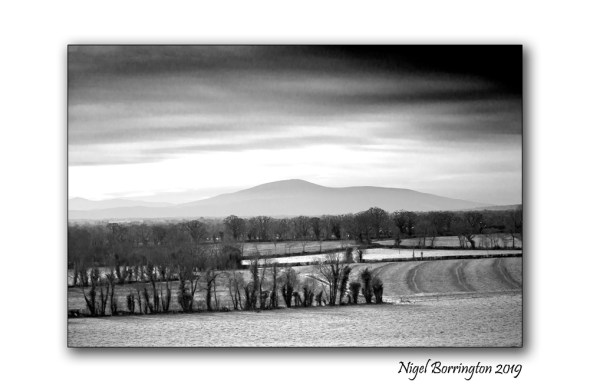

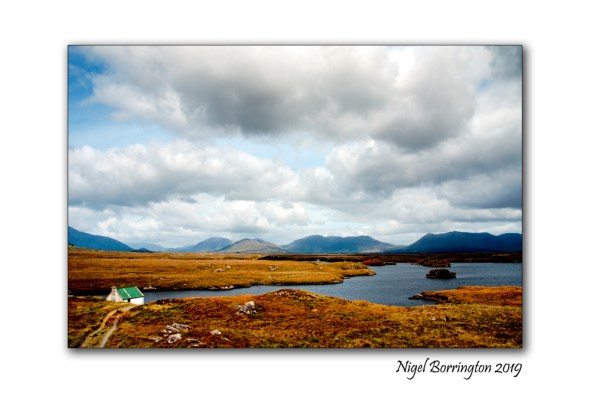


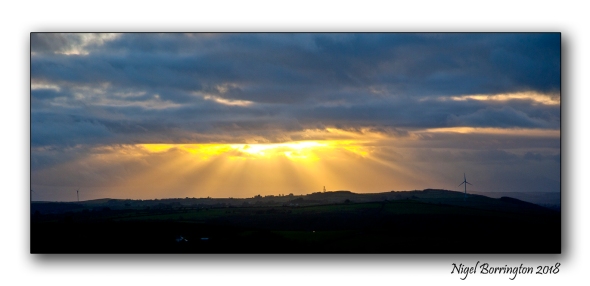


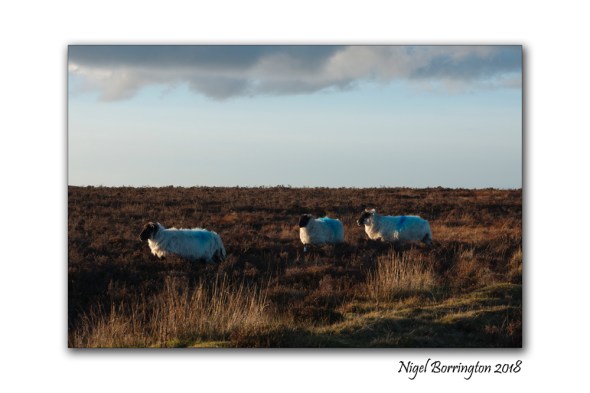

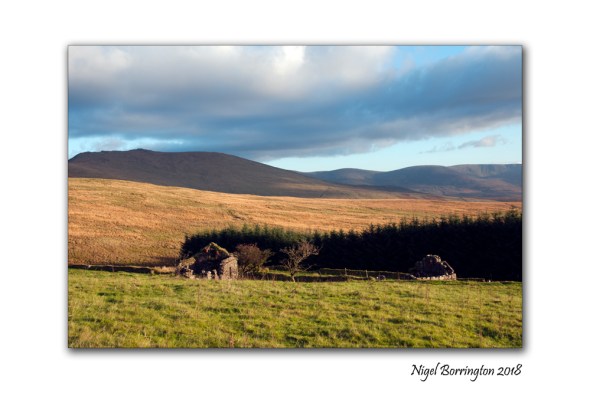
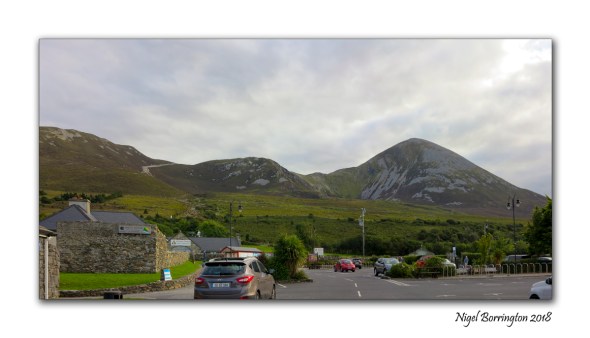

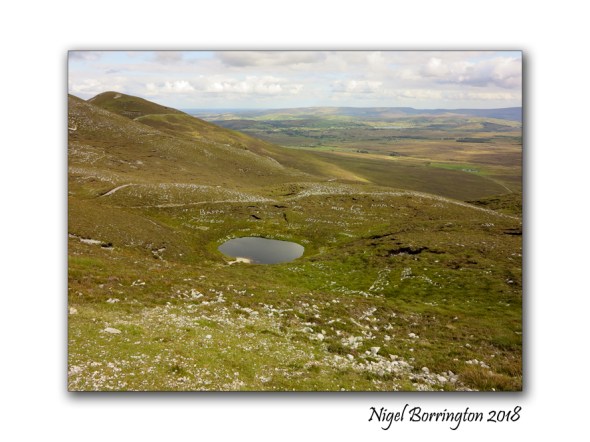


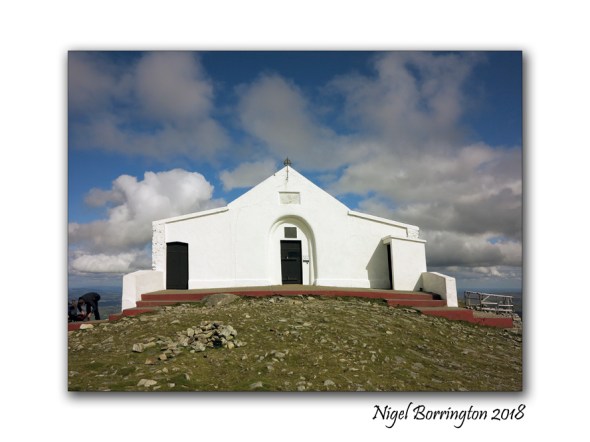


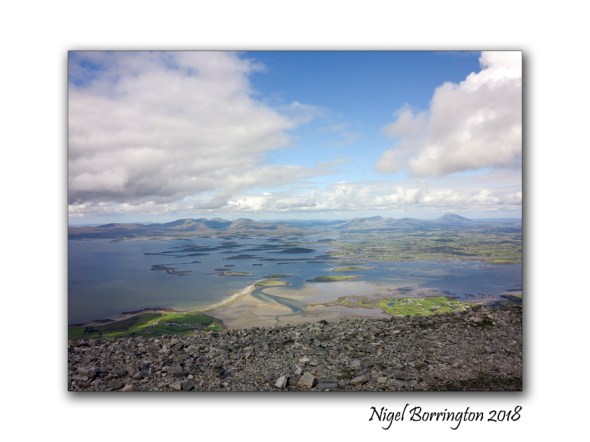

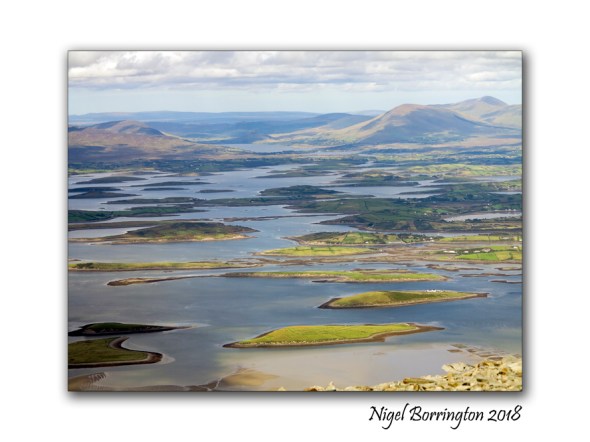


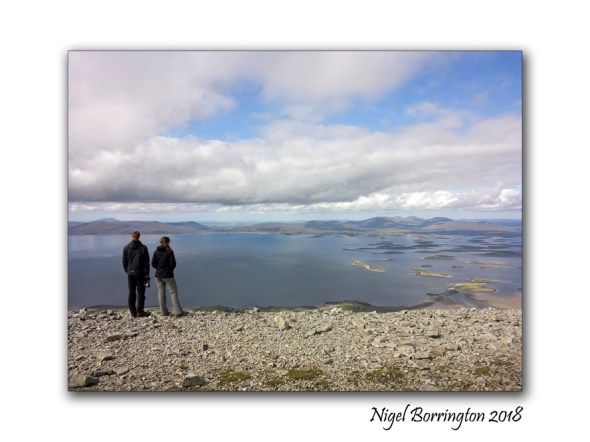





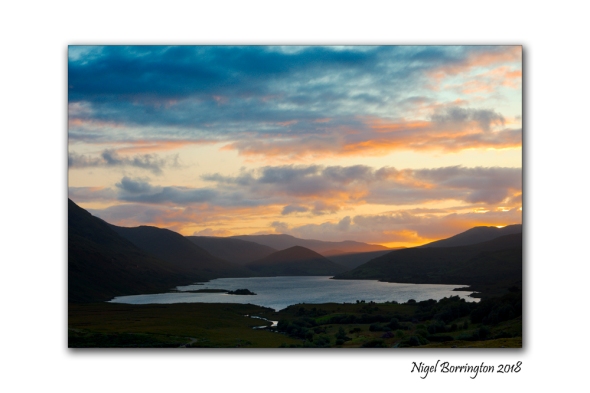




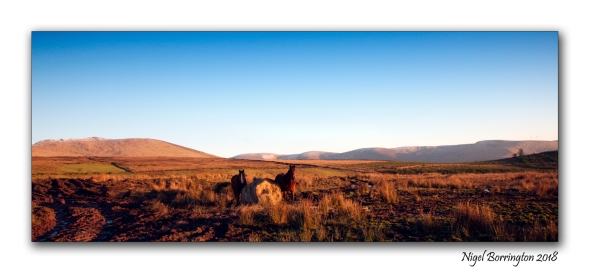
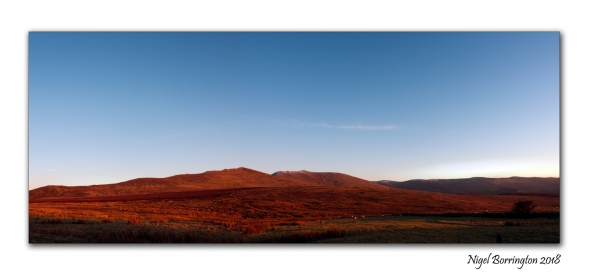

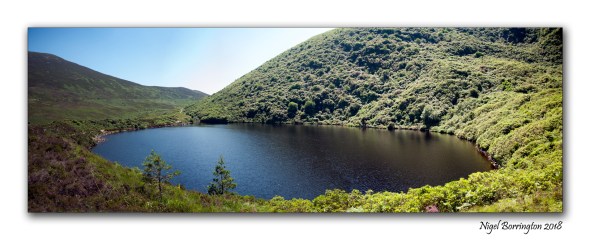

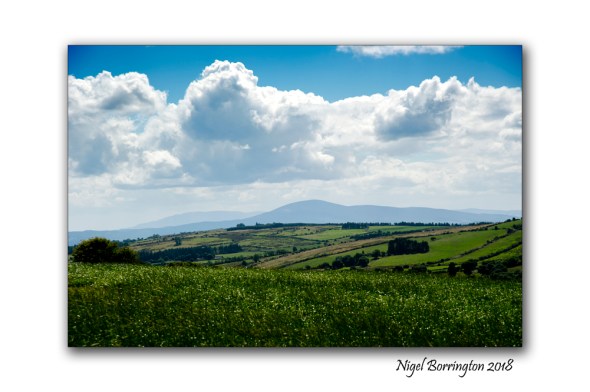



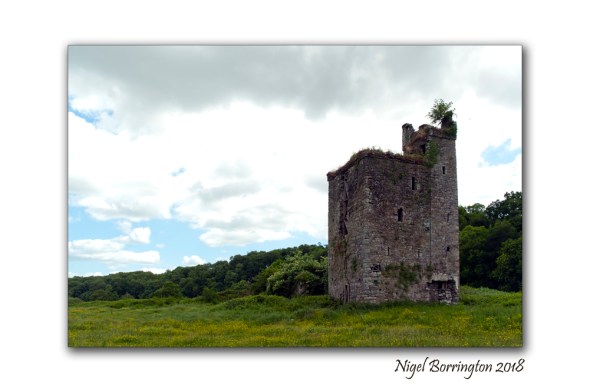
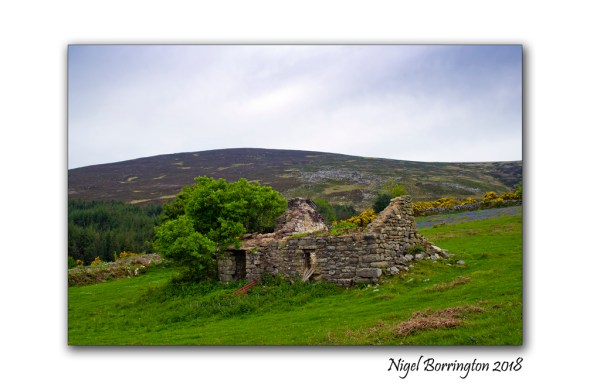
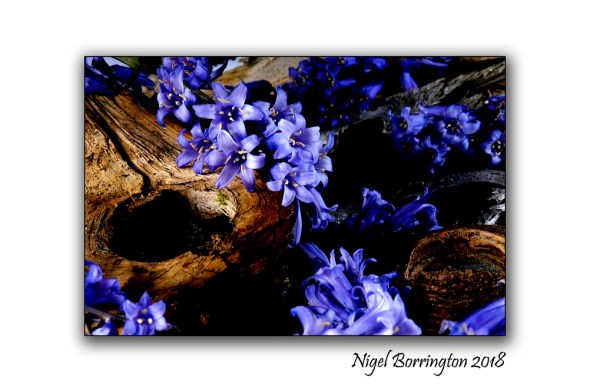



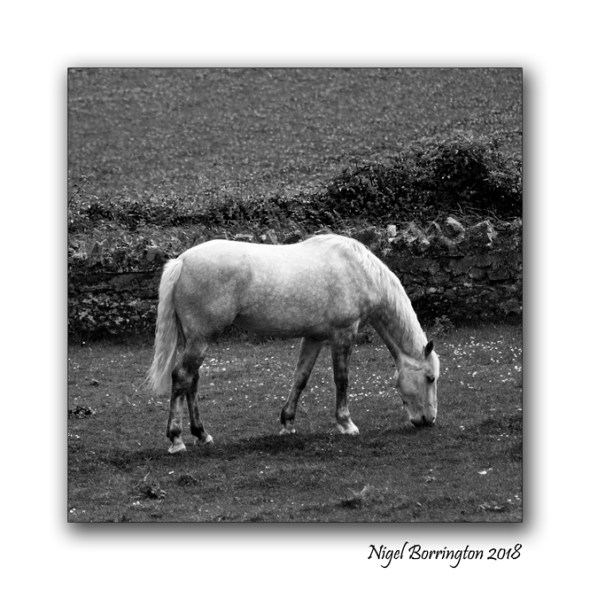












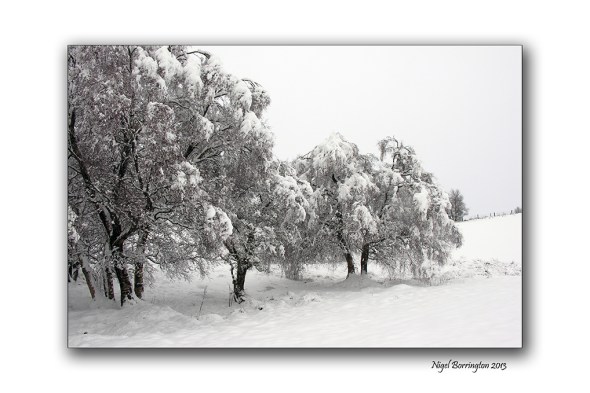



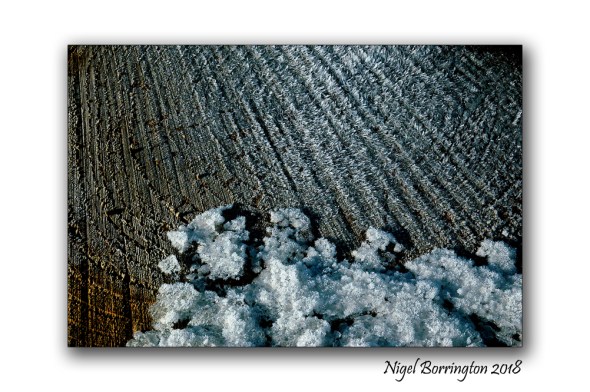
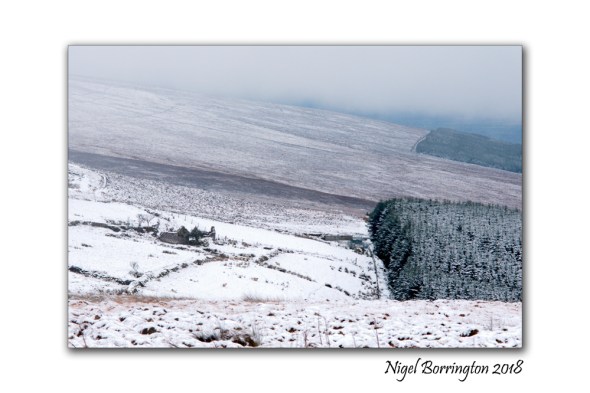
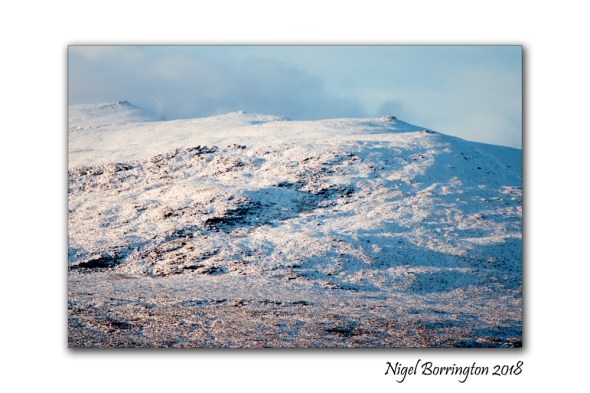
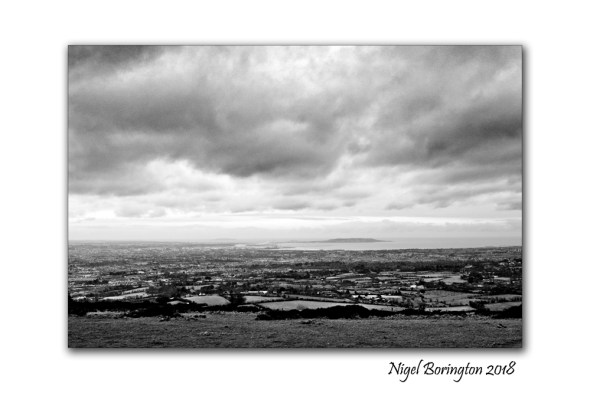
County Kilkenny by cycle, Taking the high road to the Slieveardagh hills ….
County Kilkenny by cycle
This weekend on Saturday morning, 12th May 2018 and I achieved one of my cycling aims for 2018, cycling all the way up to what well could be the highest road (at some 333 meters) in county Kilkenny, in the Slieveardagh hills at Blanchfields bog, with its wind farm of Ballybay.
There are some stunning views of county Kilkenny and Tipperary from here and on Saturday the weather was perfect, It was just a great feeling after some weeks of lower level cycling, to get ready.
Share this:
May 14, 2018 | Categories: black and white, Comment, Irish Landscapes, Landscape, Mountains, Travel Locations | Tags: Cycle routes, cycling, Nigel Borrington, Taking the high road, Weekend cycling | 1 Comment